
The Simpsons are one of the most recognized IPs in the world today. Despite having been around for over three decades, the yellow American family is still going strong. And it’s like they have not aged a day since 1989.
Having been around for so long, they’ve naturally had their brand put onto almost every product under the sun. Lunchboxes, watches, jack-in-the-boxes, you name it, there’s probably a Simpsons version of it. The same can be said for video games, which had their fair share of The Simpsons software.
But what is the best Simpsons game around? Read on to find out!
The Simpsons Cartoon Studio
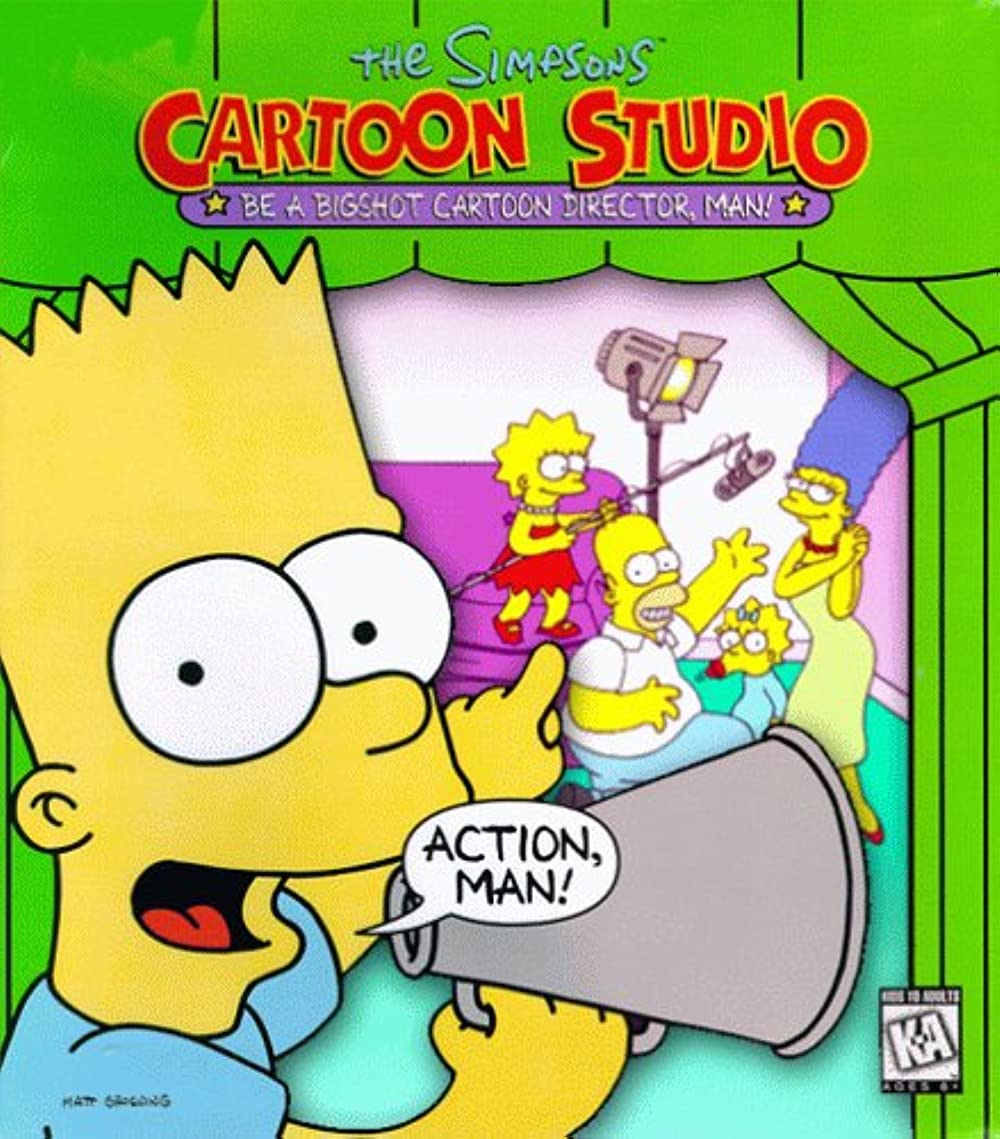
While it’s not really a “game”, The Simpsons Cartoon Studio computer program allowed fans of the show to create their own clips and even episodes with this neat software package.
Users can choose from a number of different scenes to stage their clips. From there, select characters, props, sound effects, and voice lines to create your own personal scene. All the animations are actually hand-drawn by the animators at Fox. The cast also recorded additional lines specifically for the game.
While it is fun and humorous to be able to set up your own scenes with pratfalls and jokes, the program is far from perfect. The UI/UX was not intuitive and it required a decent time investment to get properly acquainted with. This would have been even more prevalent among younger users who were probably lacking in patience. Couple this with fairly limited options on hand, the effort versus yield was rarely worth the struggle.
The Simpsons: Bart’s Nightmare
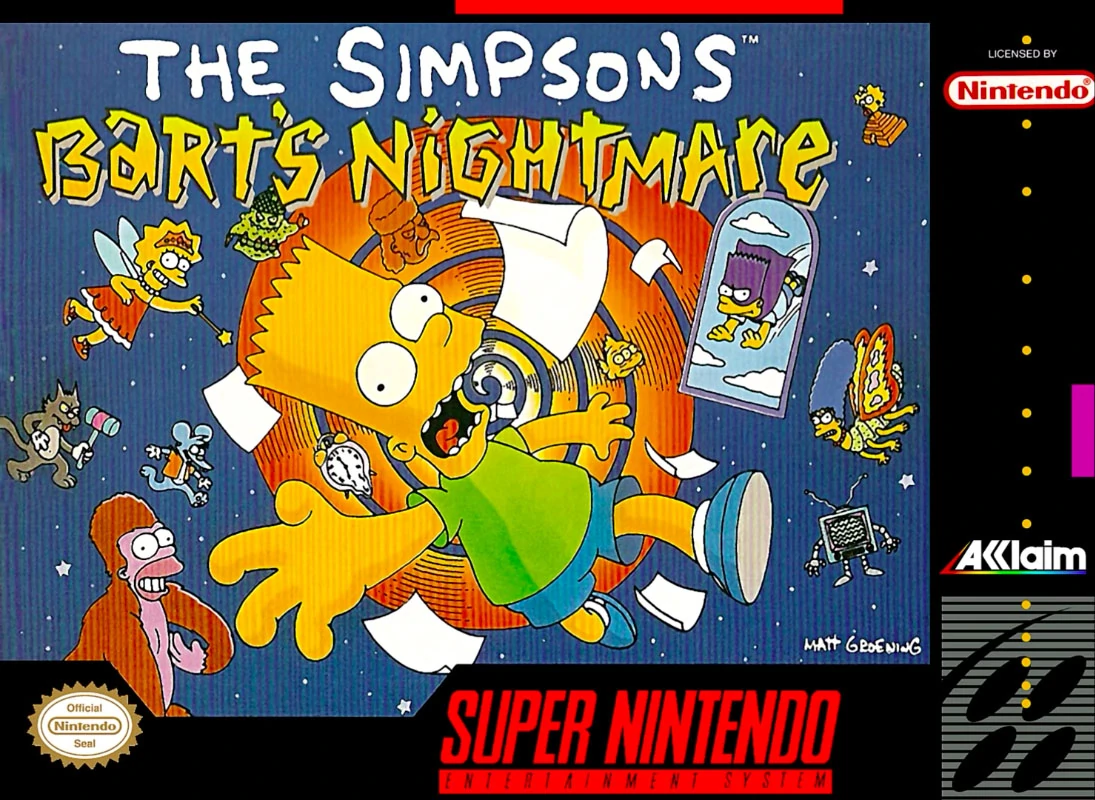
Various platforms released this video game in the 1990s when The Simpsons’ popularity exploded. Today, Bart’s Nightmare is still one of the better video games fans can play.
This video game was developed by Sculptured Software and published by Acclaim Entertainment in 1992. At that time, The Simpsons-mania was sweeping the world. Everyone wanted to make a product or collaborate with the yellow family in some way. Bart, in particular, became incredibly popular and he was the centerpiece of most spin-off media, especially video games.
In this adventure, Bart falls asleep while researching his homework assignment. The levels take place within his dreams, with the aim of reclaiming his lost homework pages. This premise leads to a lot of abstract level designs and concepts. For example, one level has Bart acting as a Godzilla-type creature, with Marge’s head appearing on a giant moth.
With awkward controls and punishing difficulty, Bart’s Nightmare is probably not the easiest game to play. However, there are some interesting design choices on display, and there’s enough variety in the relatively short length to be entertaining.
The Simpsons Wrestling

Graphically it may be tough to look at today, but The Simpsons Wrestling was a fun novelty. It did however keep up the trend of Simpsons games being notoriously difficult to beat, thanks to Ned Flanders and Mr. Burns.
As an arcade-type action game, The Simpsons Wrestling pitted various Springfieldians against each other in the squared circle. Homer, Apu, and Groundskeeper Willie among others duke it out to become heavyweight champion of the town.
While the gameplay isn’t necessarily deep, each character has their own unique moves and voice lines provided by the cast. Characters have light and fast attacks, strong and slow attacks, as well as special moves. These are controlled with a stamina bar that recharges in between blows. Special attacks include Marge releasing Maggie to latch onto your leg and slow you down, or Bumblebee Man setting his chihuahua loose to nibble at your ankles.
This game follows the common structure of fighting games as you may your way up the ladder of combatants to the championship bout. Each fight gets progressively harder, with a few of the townsfolk having a somewhat unfair advantage (like Smithers throwing bombs at you while fighting Mr. Burns).
Overall, The Simpsons Wrestling is a fun brawler but lacks any proper depth or skill mastery which kills its replayability.
The Simpsons Road Rage
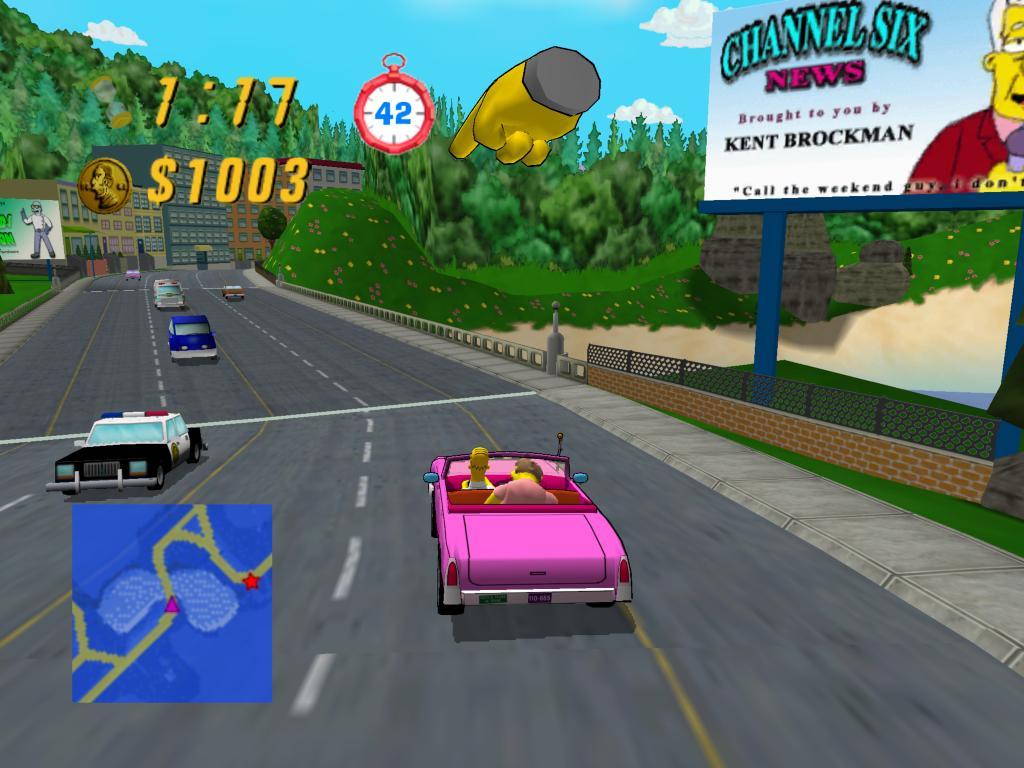
While the game design lacks originality (which we’ll get to), The Simpsons Road Rage is a functional and enjoyable game that whetted our appetite before another Simpsons game came along.
In a very loose story to contextualize the game, Mr. Burns buys all elements of public transport in Springfield. This causes people of the town to use their own vehicles to get around and fill the void of safe communal transportation.
The game is, for all intents and purposes, a reskin of Sega’s well-received cabbie simulator, Crazy Taxi. The gameplay is identical; travel through Springfield looking for customers and take them to their destination before the time limit expires. Shamelessly, it’s obvious some animations and UI elements have been lifted straight from the Sega series.
Anyway, the game features various well-known Simpsons characters, most of them having their own unique vehicles. There are also different map locations that players can explore rather than just being locked into one area.
Road Rage is at the very least inoffensive, but there’s not enough content variety to keep you going for very long unless you’re infatuated with the core gameplay loop.
Sega took umbridge with Radical Entertainment’s game and filed a lawsuit against them, Fox Interactive, and EA. The matter was eventually settled out of court before it came to trial, however.
The Simpsons: Tapped Out!
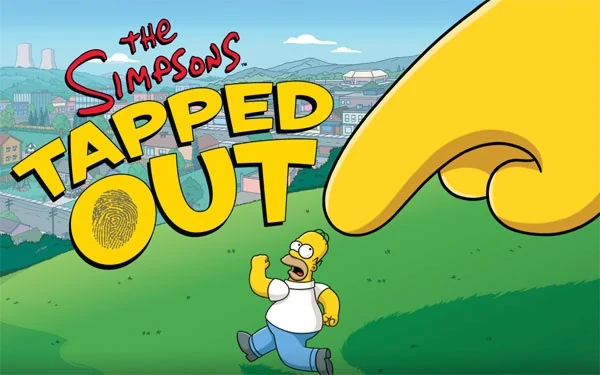
Although it doesn’t feature what many would describe as “deep” gameplay, The Simpsons: Tapped Out features a lot of content for a casual app game.
Being the oaf that he is, Homer accidentally causes a nuclear meltdown at the power plant. This accident wipes away everything in the town, and it’s up to him to rebuild and repopulate the city with the former residents.
Playing similar to something like SimCity but in a much more casual sense, the objective of the game is to create as many buildings as possible to generate income. There are also in-game quests to complete which unlock more money and/or characters, and create structures. From there, the cycle continues indefinitely (it is an app after all).
The most profitable Simpsons game ever made, this game app is still going strong today even after ten years. With more than 80 million downloads and over $200 million, this game continues to be supported with content updates and themed events taking place throughout the calendar year.
One for the much more relaxed audience, Tapped Out puts a decent Simpsons face on this type of game. Although it does suffer from the usual Freemium traps and practices.
The Simpsons: Virtual Springfield
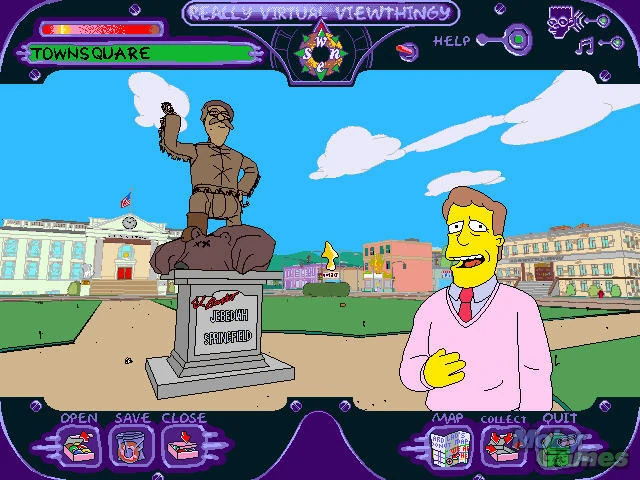
Again like Cartoon Studio, Virtual Springfield isn’t so much of a game as an interactive sandbox experience.
Digital Evolution developed this “adventure” game, to use the term slightly loosely, in 1997 only for PC and Mac, After being greeted by Troy McClure and welcomed to town, the player is encouraged to explore the city of Springfield. You can travel around visiting numerous locations from the show. These include Moe’s Bar, the Kwik-E-Mart, Springfield Elementary, and the Simpson House to name a few.
The object of the game is to find all the collectible cards hidden around Springfield, some of which are found in secret areas. These areas themselves are either concealed within the locations or require additional items to unlock.
While the “plot” (if you can call it that) is essentially non-existent, the level of detail is fairly high. The main issue the game has is that it primarily caters to hardcore fans of the show only. Die-hard Simpsons fans will enjoy wandering around a 3D model of the American town. Other than that, there’s little here for relaxed players. Newcomers or casual players will more than likely quickly get bored with the slow-paced exploration.
The Simpsons: Bart’s House of Weirdness
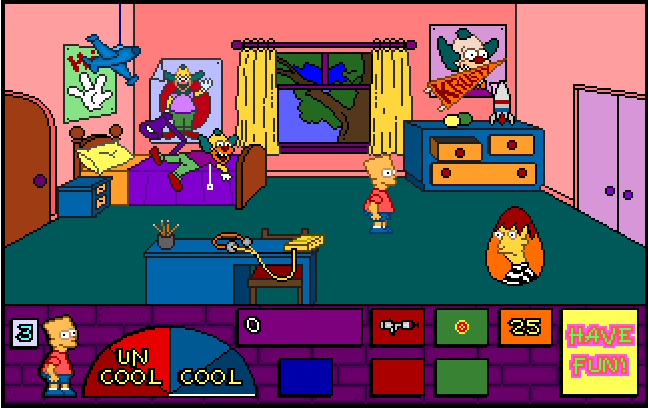
Possibly the least known Simpsons game on this list, this platformer for MS-DOS had a cult following but was hindered in distribution owing to the platform it was released on.
An adventure platformer similar to other games like Bart’s Nightmare and Bartman Meets Radioactive Man, House of Weirdness was a combination of crazy yet palatable. After being grounded, Bart escapes from his house and makes his way around town. He eventually arrives at an amusement park where he has to save Krusty the Clown.
The game features six levels that take place around the Simpson home, as well as a mall and a dream sequence within an Itchy & Scratchy cartoon. Bart has access to an arsenal of weapons to dispatch enemies. However, graphically the game is far superior to other Simpsons games that came out around the same time.
Oddly, Konami published the game, which makes it more perplexing as to why it didn’t get a wider console release onto the Nintendo or Sega systems of the era. The limited release of being bound to MS-DOS is most likely the reason people haven’t even heard of the game, let alone played it.
The Simpsons Arcade
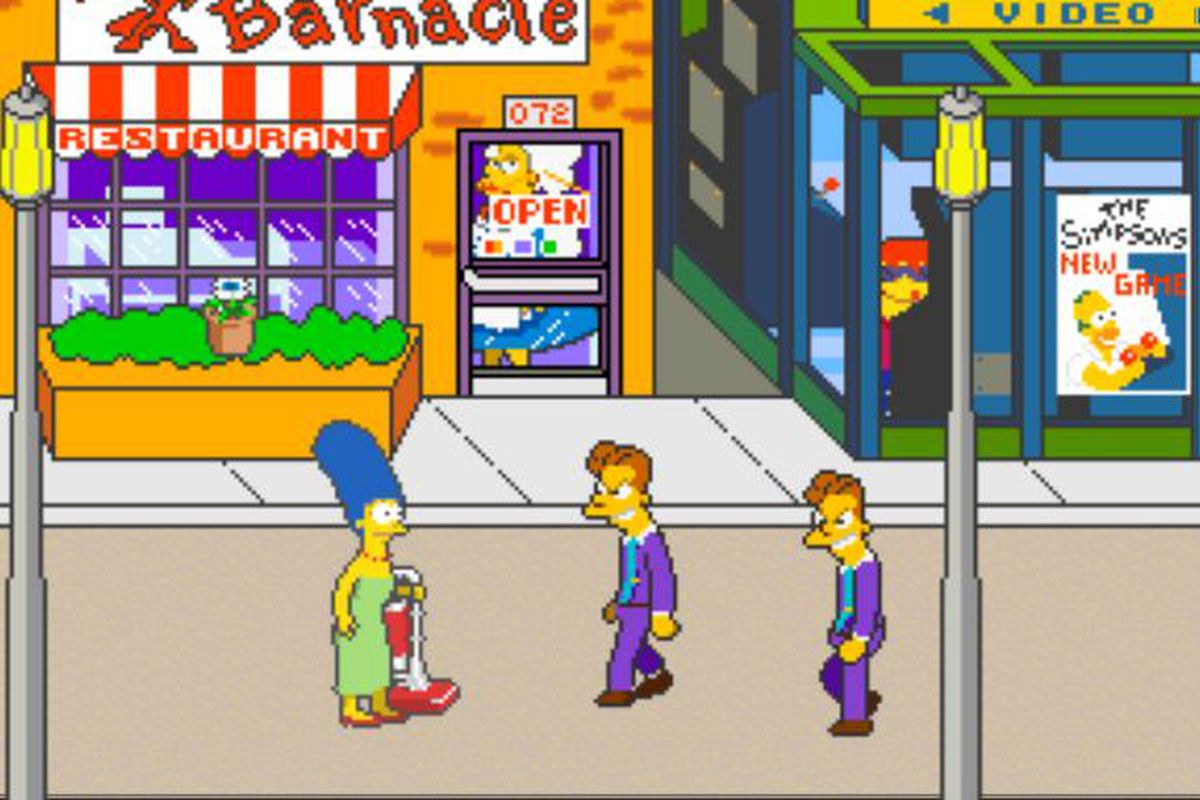
Full of challenges as many arcade games of the 1980s and 1990s were, this coin-devouring cabinet was a staple of many young person’s formative years, and beating it earned you a badge of pride.
While out shopping, the Simpsons family bumps into Waylon Smithers and some henchmen who are robbing a bank. In the scruffle, Maggie replaces her pacifier with a stolen diamond, causing Smithers to grab her and escape. It’s up to the remaining family members to team up to save her and stop Smithers in the process.
The gameplay follows the standard Beat ‘Em Up gameplay, making your way across the screen and clobbering enemies as advance. As in similar titles like Streets of Rage, each character (Homer, Marge, Lisa, and Bart) has their own moves. Furthermore, depending on the lineup, players can even activate unique powerful team moves.
While it doesn’t do anything revolutionary, The Simpsons Arcade is a surprisingly robust and well-made game. It performs all of the tropes of the genre very well, has responsive controls, hard but fair levels, and is a blast in cooperative mode.
The Simpsons Game
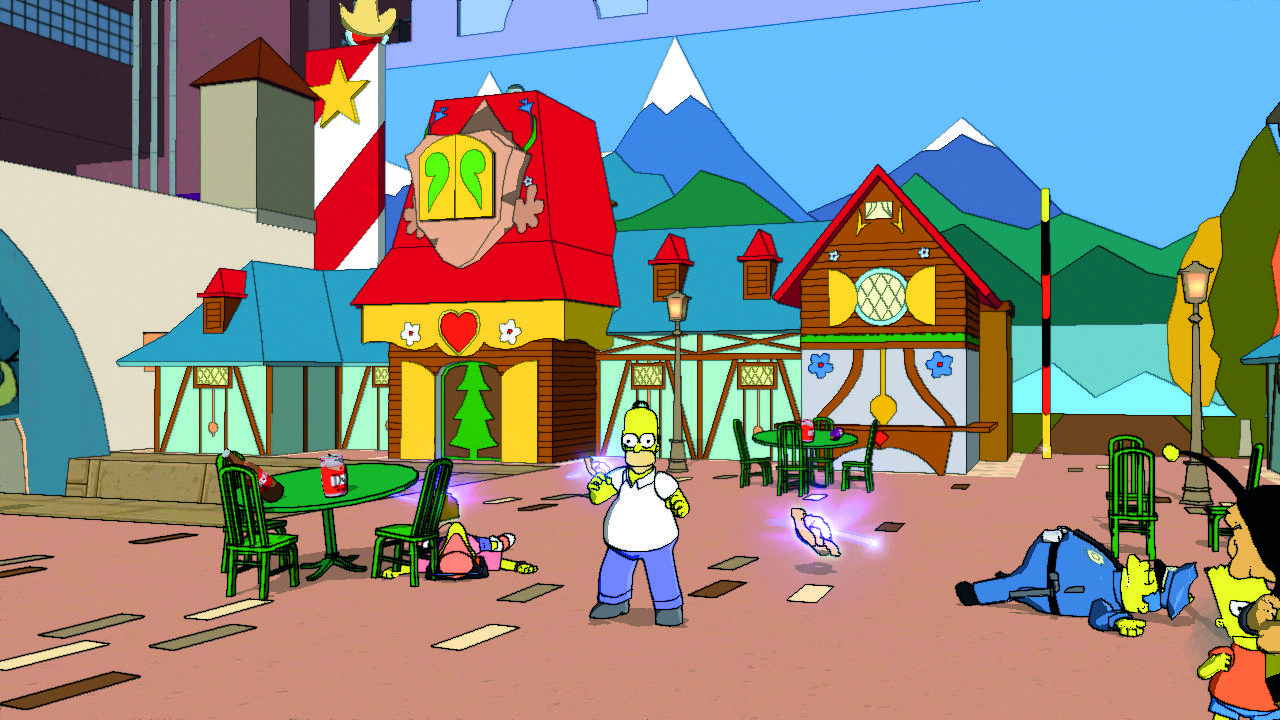
A collect-a-thon that embraces elements of both linear gameplay and open-world, the most recent Simpsons game for consoles does a number of things well.
The story becomes incredibly meta quite quickly. Bart discovers that he and his family are inside a video game, giving them special powers. After using their powers for a positive cause, they join together to stop an alien invasion. Discovering the need to become more powerful, they journey to visit the Creator who can grant them more powers and stop them from being deleted when the next Simpsons game is released.
Written by three of the show’s writing team, it may divide those who aren’t keen on the whole “self-aware” angle. The dialogue and level of satire are on-point though. The game pokes fun at other series and tropes of the media in general, most notably the collectibles of “Video Game Cliches” like invisible walls and un-openable doors.
The game isn’t the longest but is padded by the almost overwhelming amount of things to collect in each level as well as the Springfield overworld. Gameplay-wise, it’s a fairly simplistic platformer that controls well, but fights with the camera occur can often. More for the hardcore fans of the show, The Simpsons Game also has collector value with the different console game box art.
The Simpsons Hit and Run

Often cited as the best Simpsons game around (for good reasons), this Springfield-based Grand Theft Auto parody puts on a great show, and is routinely played by many to this day.
Strange events start occurring in Springfield, most noticeably black surveillance vans and cameras “disguised” as large wasps. Homer investigates, while Bart goes missing while searching for a newly released video game. The remaining Simpsons search for him, while simultaneously trying to uncover the strange conspiracy afoot in the town.
While the game very much emulates the Grand Theft Auto III game, it does so in a more light-hearted and appreciative way rather than trying to “rip off” the Rockstar game. The action is much more arcade-like, with the driving feature being the most “casualized” feature. Missions are also nowhere near as serious. Despite that, Radical Entertainment did an amazing job of adapting the style of GTA to the world of The Simpsons.
Taking place over three fairly large overworld maps with a few internal locations, the open-world on offer in Hit & Run is more than respectable. These locations are filled with gags, jokes, and references that true fans of the show will appreciate, with casual on-lookers still finding them funny.
Almost unanimously held in high regard thanks to its references, great writing and jokes, level of detail, and the amount of content in it, The Simpsons Hit and Run has fans crying out for a remaster of some kind.
Was this page helpful?
Our commitment to delivering trustworthy and engaging content is at the heart of what we do. Each fact on our site is contributed by real users like you, bringing a wealth of diverse insights and information. To ensure the highest standards of accuracy and reliability, our dedicated editors meticulously review each submission. This process guarantees that the facts we share are not only fascinating but also credible. Trust in our commitment to quality and authenticity as you explore and learn with us.
